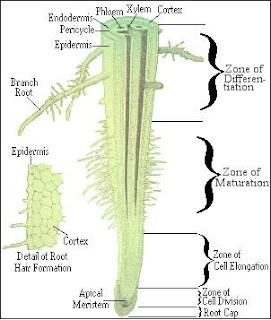KOMPAS.com — Dugaan para ilmuwan bahwa artropoda atau hewan berbuku-buku berevolusi dari lobopodia atau sejenis cacing mulai menemukan titik terang. Penemuan fosil yang diberi nama "kaktus berjalan" diharapkan menjadi jawabannya.
Sebuah fosil makhluk serupa cacing berkaki 10 yang hidup 520 juta tahun lalu diduga sebagai mata rantai penghubung dalam sejarah evolusi serangga, laba-laba, dan krustasea. Makhluk yang disebut kaktus berjalan itu termasuk kelompok hewan serupa cacing disebut lobopodia, yang diduga sebagai asal-usul artropoda.
"Penemuan kaktus berjalan sangat penting karena sebelumnya kami belum menemukan fosil yang dapat dijadikan acuan dugaan kami," kata Jianni Liu, pemimpin tim peneliti yang melakukan studi terhadap fosil tersebut.
Sebelum penemuan kaktus berjalan, Diania cactiformis, semua anggota lobopodia memiliki tubuh dan tungkai yang lunak. Sementara hewan artropoda memiliki tubuh yang bersegmen (berbuku-buku) serta tungkai yang menyatu dan terlindungi cangkang keras.
Petunjuk evolusi artropoda hingga saat ini terdapat pada cacing beludru yang disebut-sebut sebagai satu-satunya keluarga terdekat bagi seluruh artropoda. Setelah sebelumnya sempat diduga sebagai siput, hewan yang hidup di tanah ini hampir seluruh bagian tubuhnya lunak, kecuali cakar dan rahangnya.
Menurut Graham Budd, profesor paleobiologi di Uppsala University, Swedia, yang tidak terlibat dalam studi, penemuan kaktus berjalan akan mengisi sejarah evolusi di antara cacing beludru dan artropoda modern, yang dalam hal jumlah dan keragamannya merupakan kelompok hewan terbesar di bumi.
Namun, ia belum yakin kaki keras pada kaktus berjalan diwariskan langsung pada hewan artropoda modern. "Sebagai contoh, bisa saja kaktus berjalan bukan relasi dekat artropoda modern dan kaki kerasnya telah berevolusi berkali-kali. Selain itu, mungkin juga tubuh artropoda primitif mengeras sebelum kakinya," kata Budd.
Oleh karena itu, Budd mengatakan masih ingin melihat bukti lebih lanjut pada materi-materi fosil yang akan datang. Fosil-fosil baru, terutama yang berasal dari China, telah membantu memperjelas sejarah evolusi artropoda. Selama lebih kurang satu dekade ini, para ilmuwan telah memiliki beberapa konsensus tentang sejarah itu. (National Geographic Indonesia/Agung Dwi Cahyadi)
Cactus Walk of Life 520 Million Years Ago
KOMPAS.com - Allegations of the scientists that the arthropod or animal-jointed lobopodia or book evolved from a kind of worm began to find a bright spot. The discovery of the fossil, named "cactus walk" is expected to be the answer.
A fossil worm-like creature with legs 10 which lived 520 million years ago suggested as an intermediate link in the evolutionary history of insects, spiders, and crustaceans. Creature called cactus run that included a similar group of animals called worms lobopodia, which is suspected as the origin of arthropods.
"The discovery of cactus went very important because previously we have not found the fossils that can be used as reference for our expectations," said Jianni Liu, leader of the research team that conducted a study of the fossil.
Before the discovery of cactus walk, Diania cactiformis, all members lobopodia have a soft body and limbs. While the animal has a body that bersegmen arthropods (jointed-book) and the legs together and protected hard shell.
Instructions to the present evolution of arthropods found on velvet worms is touted as the only next of kin for all arthropods. Having previously had suspected as snails, animals that live in this land of almost all soft body parts, except the claws and jaws.
According to Graham Budd, a professor of paleobiology at Uppsala University, Sweden, who was not involved in the study, the discovery of cactus walk will fill the evolutionary history of modern arthropods and velvet worms, which in terms of numbers and variety is the largest animal group on earth.
However, he has not convinced the foot hard on the cactus walked passed directly in animal modern arthropods. "For example, it could be run instead cactus close relations of modern arthropods have evolved and severity feet many times. In addition, primitive arthropod bodies may also harden before his feet," said Budd.
Therefore, Budd says still wants to see further evidence in the fossil material to come. New fossils, especially those from China, has helped clarify the evolutionary history of arthropods. During more or less a decade, scientists have had some consensus about that history. (National Geographic Indonesia / Agung Dwi Cahyadi)




Comments
Post a Comment
Isi Komentar kamu untuk Posting ini!!